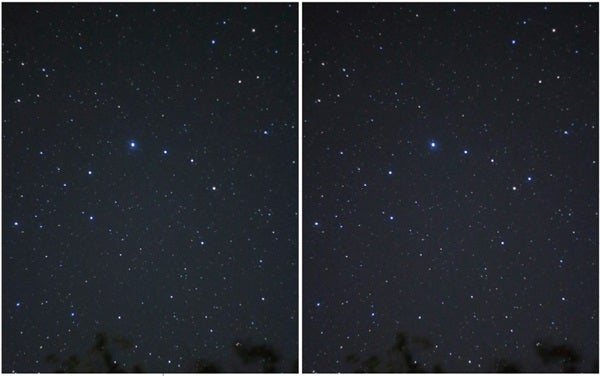Corona Borealis the Northern Crown (left) is a small constellation in the spring northern sky. To find it, look about 20° northeast of brilliant Arcturus (Alpha Boötis). The photo illustration to the right shows how T CrB may appear in outburst.Corona Borealis the Northern Crown is a small constellation in the spring northern sky. To find it, look about 20° northeast of brilliant Arcturus (Alpha Boötis).
STEPHEN JAMES O’MEARA
The extraordinary dimming of Betelgeuse (Alpha [α] Orionis) that began in October 2019 captured the attention of astronomers worldwide. The star’s dip was a golden moment for Edward Guinan and colleagues at Villanova University, who have been monitoring the star for the past 25 years. They were the first to report its recent dimming.
Betelgeuse’s brightness varies on three known cycles: one between 100 to 180 days, one about every 425 days, and one about every 5.9 years. “The current faintness of Betelgeuse appears to arise from the coincidence of the star being near the minimum light of the 5.9-[year] light-cycle as well as near the deeper than usual minimum of the 425-[day] period,” Guinan announced in an International Astronomical Union Circular on December 23, 2019.
We live in a time when predicting events like the eruption of recurrent novae — ordinary novae that have multiple eruptions — are becoming ever-more familiar. Take, for example, how Louisiana State University astronomer Bradley Schaefer predicted the 2010 eruption of the recurrent nova U Scorpii and the 2014 eruption of the recurrent nova V745 Sco.
A bit of history
Now that Orion has left the evening sky, it’s a perfect time to start keeping an eye on yet another stellar wonder: recurrent nova T Coronae Borealis (T CrB). Popularly known as the Blaze Star, it may erupt in brightness any time in the near future.Originally recorded as a magnitude 9.5 star in the Bonner Durchmusterung (1859–62), T CrB made history on May 12, 1866. That night, Irish astronomer John Birmingham was on a road near his hometown in Tuam, Galway County, when he noticed a nova in Corona Borealis (T CrB) “at least equal to Alphecca (Alpha CrB) and decidedly more brilliant.”
Birmingham reported his observation to W.T. Lynn of the Royal Observatory Greenwich. Julius Schmidt, director of the National Observatory of Athens, independently discovered T CrB’s outburst the following night, writing to Lynn that he had surveyed Corona Borealis four hours prior to Birmingham’s discovery and did not notice a change to the constellation. Lynn concluded, therefore, that the star must have risen from beyond naked-eye visibility to 2nd magnitude, “either suddenly or with great rapidity,” in about four hours.
Birmingham added that the star’s color was “nearly white with a bluish tinge,” though others reported seeing warmer hues. For instance, on May 18, 1866, F. Bird of Birmingham, England, said that through apertures up to 12 inches and powers up to 400x, the star appeared “decidedly yellow, inclining toward red.”
T CrB dropped to 10th magnitude in only a few days. This behavior was repeated during its next outburst when it achieved roughly magnitude 3 on February 9, 1946. So, the next few years may prove important for T CrB, which is again showing signs of unrest.
An upcoming event?
T CrB is a binary star system comprising a red giant with a close white dwarf companion. Gas from the giant star spills onto the white dwarf until a runaway thermonuclear explosion occurs on the dwarf star’s surface, which we see as a novalike outburst.
The American Association of Variable Star Observers (AAVSO) data show that T CrB’s minimum brightness plateaued between April 2011 and February 2015. It then entered an active state, including fluctuations in its minimum brightness of up to a magnitude.
In July 2019, Schaefer related by private communication that T CrB was then “in the middle of its decadelong pre-eruption plateau, with this being a weird and very high energy event.” Specifically, he says, the star’s “continuum has gone very blue and very high excitation lines are popping in and changing fast. Any such longterm pre-eruption plateau is ‘impossible.’ The identical pre-eruption rise happened back in 1936–1946. So I am predicting that T CrB will have its third known eruption in the year 2023.6 +/-1.0.”
So, keep your eyes on this star. Familiarize yourself with this constellation and watch for an aberration in its shape. Or head to the AAVSO’s website for a chart to monitor the star telescopically. As always, let me know what you see or don’t see at sjomeara31@gmail.com










